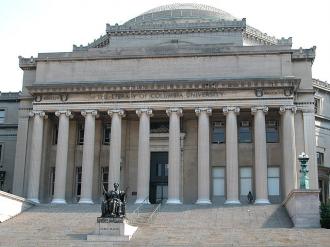My neighborhood in Yerushlayim has two shules. What? Only two shules? Yes, it is a very small neighborhood. Both shules grew in membership and outgrew their original tiny facilities. Both shules decided that they would have to build a larger building to accommodate all the people who wanted to daven there. But there is where the similarities end. And our story begins.
Anyone who has been involved in a shule building project knows how difficult it is to raise the money needed. A building campaign requires very large amounts of money. It is very difficult to raise all that money strictly from the shule membership. Usually outside donations are needed to acquire sufficient funds to make the project a reality. As I said, this is a small neighborhood. There is a large American community, both permanent and temporary. Most of these Americans are kollel families, struggling to make ends meet (or at least see each other). Not much expendable income for building campaigns. So how to make this dream a reality? Each shule took a different approach. With different results.
Shule A decided that the most important thing was to get the shule built and open. All money acquired was used on the inside of the building. There is a stunning aron kodesh and the inside is finished off, except for the ceiling area. The whole focus was on getting the building into a usable state. However, the outside of the building is unfinished. From the outside, it looks like a construction site. It is a major eyesore. No facade of the obligatory white Jerusalem stone. Black unfinished walls. I am honestly surprised, since the building has been in this state for over a year, that the city hasn’t fined them. But their philosophy was that they wanted the building usable. If someone hates the outside appearance, let them donate the money to finish it off. Now, to be fair, this minyan mostly consists of Israelis. That matters because it is easier to get someone to donate money and dedicate part of the shule if they are a permanent resident of the area. They are invested in the neighborhood emotionally and financially. But, in any event, the main point was that they took their money and decide to invest it on the inside and get the shule up and running.
Shule B, on the other hand, had a different philosophy. They rationalized that no one donates money for the outside a shule. People want to see their plaques on an aron kodesh, a bima, paroches, etc. So, these members (more Americans than native Israelis) decided to pool their money and build the outside of the building. An empty shell. A very pretty shell. But unusable. And the project sits. Waiting for the infusion of more money to allow the completion of the inside. So this minyan still meets in a tiny caravan that is inadequate for their needs. And waits for the money to arrive to allow the project to restart and hopefully complete.
So where am I going with this story? I am not sure. I feel like this ought to be a moshel for something – especially in Ellul. Is the takeaway message that the inside is more important than the outside? That we should focus on our internal ruchniyos and downplay our external gashmiyus? And that will make us more “usable and functional”? But ultimately will the externally pretty shule be proven right and be up and functional in all its beauty while the other shule remains an eyesore? If so, what would be the message there? That we are too impatient and need to slow down and stop trying to shortcut our lives and our spiritual development? Is this a case of a spiritual “tortoise and the hare”? No answers. Decide for yourself.















